South Korean cosmetics brands, wildly successful at home and across Asia, have their eye on the European beauty market, where their penetration is, for now, only skin-deep.
Picking luxury goods powerhouse France as its bridgehead to seduce Europeans, South Korea’s leading cosmetics firm AmorePacific Corp a few months ago launched its top brand, Sulwhasoo, at the upmarket Galeries Lafayette department store.
Britain is the next planned stop for AmorePacific next year, when the company also plans to launch its other flagship brand, Laneige.
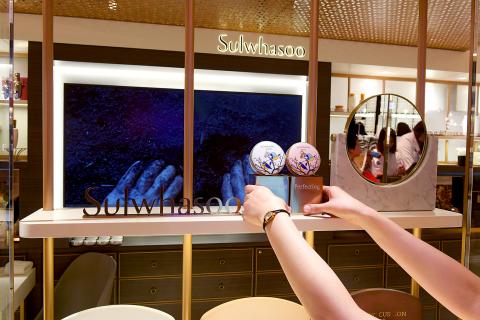
Photo: AFP
The South Korean industry has a solid reputation for innovation and a particular knack for blending natural far eastern ingredients — such as green tea, ginseng root or even snail slime — into beauty products.
Hallyu, the “Korean Wave” of pop culture sweeping Asia since the 1990s, has given cosmetics sales a big lift, with young fans wanting to make up just like their K-Drama or K-Pop idols, or even become K-Beauty ambassadors for big brands.
AmorePacific, which last year had sales of about US$5.6 billion, is still heavily reliant on its domestic market, which accounts for two-thirds of its revenues.
Its European and North American operations pale by comparison, generating combined sales of less than US$100 million.
“The company’s aim today is to widen its geographical presence beyond Asia,” AmorePacific Europe president Thierry Maman told reporters.
Tensions with Chinese clients after South Korea allowed the US to install a missile shield added urgency to the group’s ongoing drive toward “globalization,” said Maman, who was a manager at French luxury conglomerate LVMH Moet Hennessy Louis Vuitton SE before joining AmorePacific.
One of the challenges for European expansion is that the Korean Wave of pop culture has not really taken off there.
The Hallyu association can even be a bit of a drawback, said Laura Koeppler, who co-manages the Korean Smooch online store, which sells avant-garde cosmetics made in Seoul to European customers.
Early South Korean cosmetics imports to Europe rode a wave of enthusiasm for kawaii, meaning “cute” in Japanese, including TonyMoly and Skin79, which makes face masks in the shape of a panda, Koeppler said.
“Consumers thought that is what South Korea is about,” she said.
Actually “there is real skill” in K-Beauty, which has come up with game-changing products, such as BB creams, good at covering imperfections; CC Creams, which improve complexion; and so-called “cushions,” which blend skincare and make-up ingredients into a single product, Koeppler said.
Merging traditional Asian ingredients with ultra-high tech components is another hallmark of South Korean cosmetics making.
South Korean beauty and skincare require different “application rituals” than those Europeans are used to, Maman said.
“There is a need for guidance” for European consumers wanting to work Korean products into their routine, he added.
“The priority for Western brands is the effectiveness and the quantity of active ingredients that they manage to incorporate” in a beauty product, Maman said.
However, in Asia “the smell, the touch and the pleasure that a cream brings” are just as important, he added.
A number of Western beauty companies have copied South Korean cosmetics inventions, industry experts have said.
However, sometimes they simply buy into local companies for fast Asian market exposure, such as when Unilever PLC picked up South Korea’s Carver, LVMH bought a stake in CLIO Cosmetics Co Ltd and Estee Lauder Cos Inc invested in Dr. Jar+ and DTRT.
These acquisitions “show that Western beauty giants acknowledge K-Beauty players as a fast and effective instrument to capture China and emerging Asian markets,” said Sunny Um, Asian beauty sector analyst at the Euromonitor research firm.
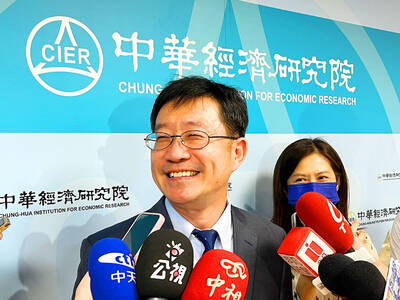
WEAKER ACTIVITY: The sharpest deterioration was seen in the electronics and optical components sector, with the production index falling 13.2 points to 44.5 Taiwan’s manufacturing sector last month contracted for a second consecutive month, with the purchasing managers’ index (PMI) slipping to 48, reflecting ongoing caution over trade uncertainties, the Chung-Hua Institution for Economic Research (CIER, 中華經濟研究院) said yesterday. The decline reflects growing caution among companies amid uncertainty surrounding US tariffs, semiconductor duties and automotive import levies, and it is also likely linked to fading front-loading activity, CIER president Lien Hsien-ming (連賢明) said. “Some clients have started shifting orders to Southeast Asian countries where tariff regimes are already clear,” Lien told a news conference. Firms across the supply chain are also lowering stock levels to mitigate
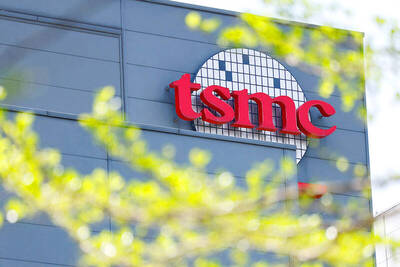
Six Taiwanese companies, including contract chipmaker Taiwan Semiconductor Manufacturing Co (TSMC, 台積電), made the 2025 Fortune Global 500 list of the world’s largest firms by revenue. In a report published by New York-based Fortune magazine on Tuesday, Hon Hai Precision Industry Co (鴻海精密), also known as Foxconn Technology Group (富士康科技集團), ranked highest among Taiwanese firms, placing 28th with revenue of US$213.69 billion. Up 60 spots from last year, TSMC rose to No. 126 with US$90.16 billion in revenue, followed by Quanta Computer Inc (廣達) at 348th, Pegatron Corp (和碩) at 461st, CPC Corp, Taiwan (台灣中油) at 494th and Wistron Corp (緯創) at
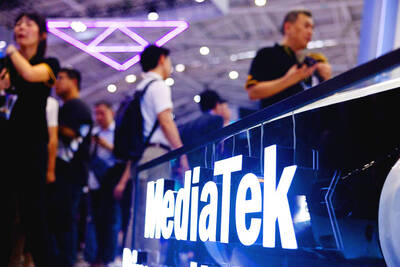
NEW PRODUCTS: MediaTek plans to roll out new products this quarter, including a flagship mobile phone chip and a GB10 chip that it is codeveloping with Nvidia Corp MediaTek Inc (聯發科) yesterday projected that revenue this quarter would dip by 7 to 13 percent to between NT$130.1 billion and NT$140 billion (US$4.38 billion and US$4.71 billion), compared with NT$150.37 billion last quarter, which it attributed to subdued front-loading demand and unfavorable foreign exchange rates. The Hsinchu-based chip designer said that the forecast factored in the negative effects of an estimated 6 percent appreciation of the New Taiwan dollar against the greenback. “As some demand has been pulled into the first half of the year and resulted in a different quarterly pattern, we expect the third quarter revenue to decline sequentially,”
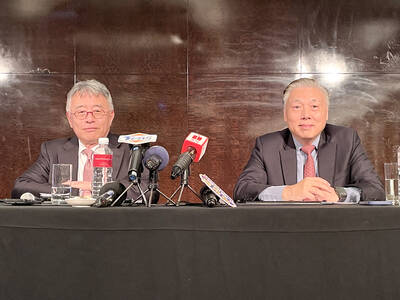
ASE Technology Holding Co (ASE, 日月光投控), the world’s biggest chip assembly and testing service provider, yesterday said it would boost equipment capital expenditure by up to 16 percent for this year to cope with strong customer demand for artificial intelligence (AI) applications. Aside from AI, a growing demand for semiconductors used in the automotive and industrial sectors is to drive ASE’s capacity next year, the Kaohsiung-based company said. “We do see the disparity between AI and other general sectors, and that pretty much aligns the scenario in the first half of this year,” ASE chief operating officer Tien Wu (吳田玉) told an